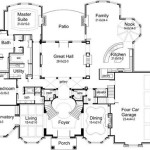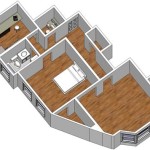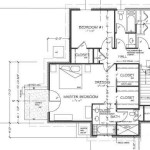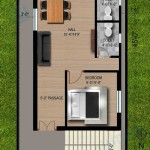How Do I Find The Original Floor Plan Of My House?
Locating the original floor plan of a house can be invaluable for various purposes, ranging from renovation planning and property valuation to historical research and understanding structural elements. However, finding these documents can sometimes be a complex undertaking, often requiring persistence and exploring multiple avenues. This article will outline several methods and resources that can be utilized to potentially uncover the original floor plan of a house.
Checking Existing Property Documents
The first and often most straightforward step involves thoroughly examining the existing documents associated with the property. These documents might be already in possession or readily accessible through personal archives. A comprehensive review can occasionally reveal floor plans embedded within the paperwork.
Mortgage Documents: Loan agreements frequently include property appraisals and surveys. While not always guaranteed, these documents may contain a basic floor plan as part of the property assessment. Contacting the lender who originally issued the mortgage or their successor institution could prove beneficial. Reviewing historical loan documents may uncover previously overlooked floor plans.
Title Deeds and Property Records: The title deed is a legal document that establishes ownership of the property. Associated with the deed are often more detailed property records, including surveys and plats. These documents may show the boundaries of the property and the general layout of the buildings on it. Furthermore, any easements, rights-of-way, or other encumbrances affecting the property will be documented. Reviewing these records can sometimes yield a floor plan or at least provide clues about the building's original design.
Homeowner’s Insurance Policies: Insurance policies often require detailed property information, which might have included a simplified floor plan or sketch. Reviewing past insurance policies, if available, could be helpful. Contacting previous insurance providers or examining older policy documents might uncover useful information, although the level of detail would likely be basic and geared towards insurance assessment. The purpose of the policy is generally centered on establishing the value of the structure for replacement or repair purposes.
Previous Sales Agreements: If the house has been sold before, the sales agreements from previous transactions might contain floor plans, particularly if the sale was recent and the real estate agent used a floor plan as part of the marketing materials. Contacting the real estate agents involved in past sales could also prove useful, as they may have copies of the floor plans on file.
Home Inspection Reports: These reports, generated prior to a sale, provide a detailed examination of the property's condition. While a full floor plan might not always be included, the report could contain sketches, measurements, and descriptions of the layout. These features may be sufficient to create a reasonable representation of the original floor plan. If the home inspection company still exists, contacting them about previous reports can be a viable option.
Consulting Local Government Resources
Local government agencies are often repositories of property information, including building permits, tax records, and planning documents. These records could contain floor plans and other details that shed light on the original construction of the house. Navigating these resources typically requires some research into the specific processes of the local jurisdictions.
Building Departments: Buildings departments are responsible for issuing building permits and ensuring compliance with building codes. Permit applications for new construction or renovations often include detailed floor plans. Searching building permit records for the house's construction date or any significant alterations could lead to the discovery of the original floor plan. Accessing these records may require submitting a formal request and paying a fee.
Tax Assessor’s Office: The tax assessor's office assesses the value of properties for tax purposes. While their primary focus is property valuation, their records often include information about the size, shape, and layout of buildings. Some tax assessor's offices may have rudimentary floor plans or sketches. These plans are usually for assessment purposes but might provide valuable insight into the overall layout and room configurations.
Planning and Zoning Departments: These departments are responsible for land-use planning and zoning regulations. Their records might include site plans or development plans for the property or surrounding area. These documents could show the location and layout of the house in relation to other buildings and property lines. In some cases, the planning department might have the original subdivision plat, which could include basic floor plans for the houses built in the subdivision.
Historical Societies and Archives: Local historical societies and archives often maintain collections of historical documents and records related to the area. These collections could include architectural drawings, blueprints, maps, and photographs that depict the house and its surroundings. Reviewing these resources can provide valuable historical context and potentially uncover the original floor plan. Contacting the local historical society or archive and inquiring about their holdings related to the property is a good starting point.
Exploring Other Potential Sources
Beyond property documents and government resources, other less conventional sources might provide clues about the original floor plan, especially in older communities. These sources necessitate a more proactive and potentially time-consuming approach.
Original Builders and Architects: If the house was built by a local builder or designed by an architect who is still in business or whose family maintains their records, they might have a copy of the original floor plan. Contacting the builder or architect, or their descendants, could be fruitful. A builder or architect is most likely to have records related to the original construction project. If the builder or architect is no longer around, their business archives or records may have been donated to a local library or historical society.
University Architecture Archives: Architecture schools often maintain archives of student projects and faculty research, which may include drawings and plans for houses in the area. If the house was designed by an architect who attended a local university, their student work or professional projects might be archived there. Contacting the architecture department or archives at nearby universities and inquiring about their holdings related to the house or its potential architect can be beneficial. This type of archival collection is often searchable online by property address, location, or architect.
Newspaper Archives: Historic newspapers sometimes feature articles or advertisements related to new construction or real estate sales. These publications may include floor plans or descriptions of houses that were being built or sold. Searching newspaper archives for the house's address or the names of its original owners could uncover valuable information. Many newspapers now have digitized archives that can be searched online. Libraries and historical societies might also maintain collections of historical newspapers.
Neighbors and Long-Term Residents: Speaking with long-term residents of the neighborhood can provide valuable insights into the history of the house and the surrounding area. They might have seen the house under construction or have knowledge of its original design. Neighbors can offer anecdotal information and insights that may not be available in official records. Moreover, they might know of other resources or people who could have information about the house's original floor plan. Sharing the project objectives and explaining the reason for seeking the floor plan can often elicit helpful information and cooperation.
Visual Inspection and Professional Consultation: If all other attempts fail, a thorough visual inspection of the house can provide clues about its original layout. Looking for evidence of past modifications, such as relocated walls, filled-in doorways, or altered window openings, can help reconstruct the original floor plan. This can be aided by consulting with a professional architect or building designer. They can assess the property, identify clues about the original structure, and create a measured drawing based on their findings. This method can provide a reasonable approximation of the original floor plan. The architect or designer can also help interpret any existing documentation and reconcile it with the physical structure of the house.
Finding the original floor plan of a house requires dedicated research and a willingness to explore various resources. By systematically checking property documents, consulting local government agencies, exploring alternative sources, and considering a visual inspection, it is possible to uncover valuable information about the house's architectural history and original design. The success depends on the age of the house, the availability of records, and the persistence of the searcher.

How To Find The Original Floor Plans For Your House

How To Get Blueprints Of Your House

Cur And Future House Floor Plans But I Could Use Your Input Addicted 2 Decorating

House Plans How To Design Your Home Plan

My House Original Floor Plan It S Nothing Like This Now Victorian Plans Vintage

House Plans How To Design Your Home Plan

Graph Paper To Virtual The Heardmont Floor Plan Welcome
Can You Give Me An Example Of A Simple Floor Plan Quora

Vignette Design Bucket List 7 Build A House From Scratch

House Plans How To Design Your Home Plan
Related Posts








